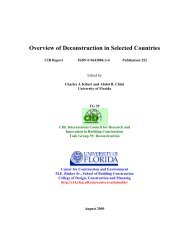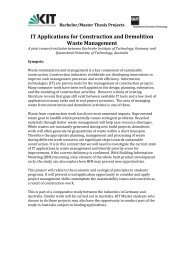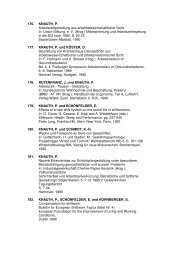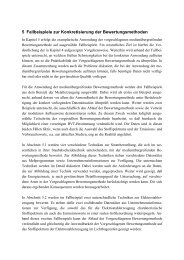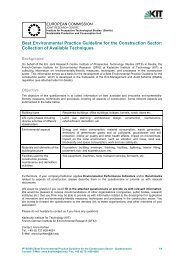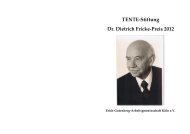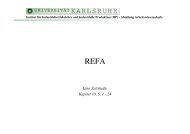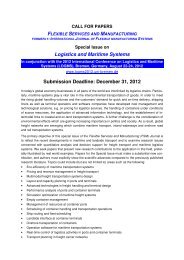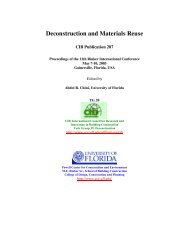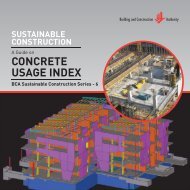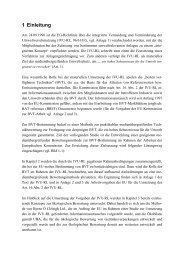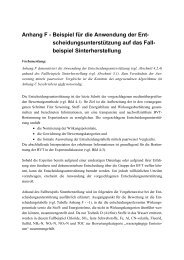Waste reduction final report -4 - Test Input
Waste reduction final report -4 - Test Input
Waste reduction final report -4 - Test Input
You also want an ePaper? Increase the reach of your titles
YUMPU automatically turns print PDFs into web optimized ePapers that Google loves.
The allowed use of the six secondary construction materials is defined by the guideline for<br />
mineral construction waste as follows in Figure 7. Construction waste for recycling is present<br />
in unbound (e.g. excavation rock), hydraulic bound (e.g. concrete) or bituminous bound (e.g.<br />
asphalt) form.<br />
Table 7: Allowed use of the six recycling materials as to the guideline for mineral based<br />
construction waste. Grey: Use not allowed [FOEN 2006].<br />
Recycling<br />
material / Use<br />
possibilities<br />
Recycled<br />
asphalt<br />
aggregates<br />
Recycling<br />
gravel sand P<br />
Recycling<br />
gravel sand A<br />
Recycling<br />
gravel sand B<br />
Recycled<br />
concrete<br />
aggregates<br />
Mixed C&D<br />
waste granules<br />
Use in unbound form<br />
Without With coating<br />
coating<br />
30 31<br />
Use in bound form<br />
Hydraulic Bituminous<br />
bound bound<br />
These constraints are based on environmental and technological considerations. For example,<br />
leaching of possible pollutants wants to be avoided by the prohibition of use without coating<br />
for four of the materials. Even if these constraints are still functional as to [Hoffmann and<br />
Dr.Jacobs 2007] they will need constantly customisation in view of allowed contaminations.<br />
A new revision of the guideline will be made after the new TVA has been established.<br />
The appendix contains a table out of the Swiss Norm SN 670 062 on secondary construction<br />
materials, their composition, their application areas and environmental constrictions (in<br />
German). The use in unbound form is mainly an application in civil engineering. Roads and<br />
squares are underlayed with basal material, or there are made backfills of dams or<br />
replenishments of gravel pits and construction sites. Bituminous bound material is used as<br />
coatings. The study mentioned before [VSS 2002] presented percentages for each of these<br />
classifications: 53% of all recycling materials are used without coating, 6% with coating.<br />
Products going into concrete production or coverings account for about 20% each.<br />
All of these six materials are mainly offered in similar forms as gravel and therefore hold a<br />
substitutional function for gravel. In many cases, the material is not bound, which could<br />
include a higher risk of leaching of pollutors. However, [VSS 2002] claims that this would<br />
only be the case at illegal backfills. Backfilling with unconditioned construction waste<br />
mustn’t be done in Switzerland. This is basically widely accepted and done; however, the<br />
30 Use is possible under the condition that the layer thickness amounts to a maximum of 7 cm and if the recycled<br />
asphalt aggregates are milled.<br />
31 Use is possible only if used as road sub-base and base material under a bituminous coating.<br />
102



